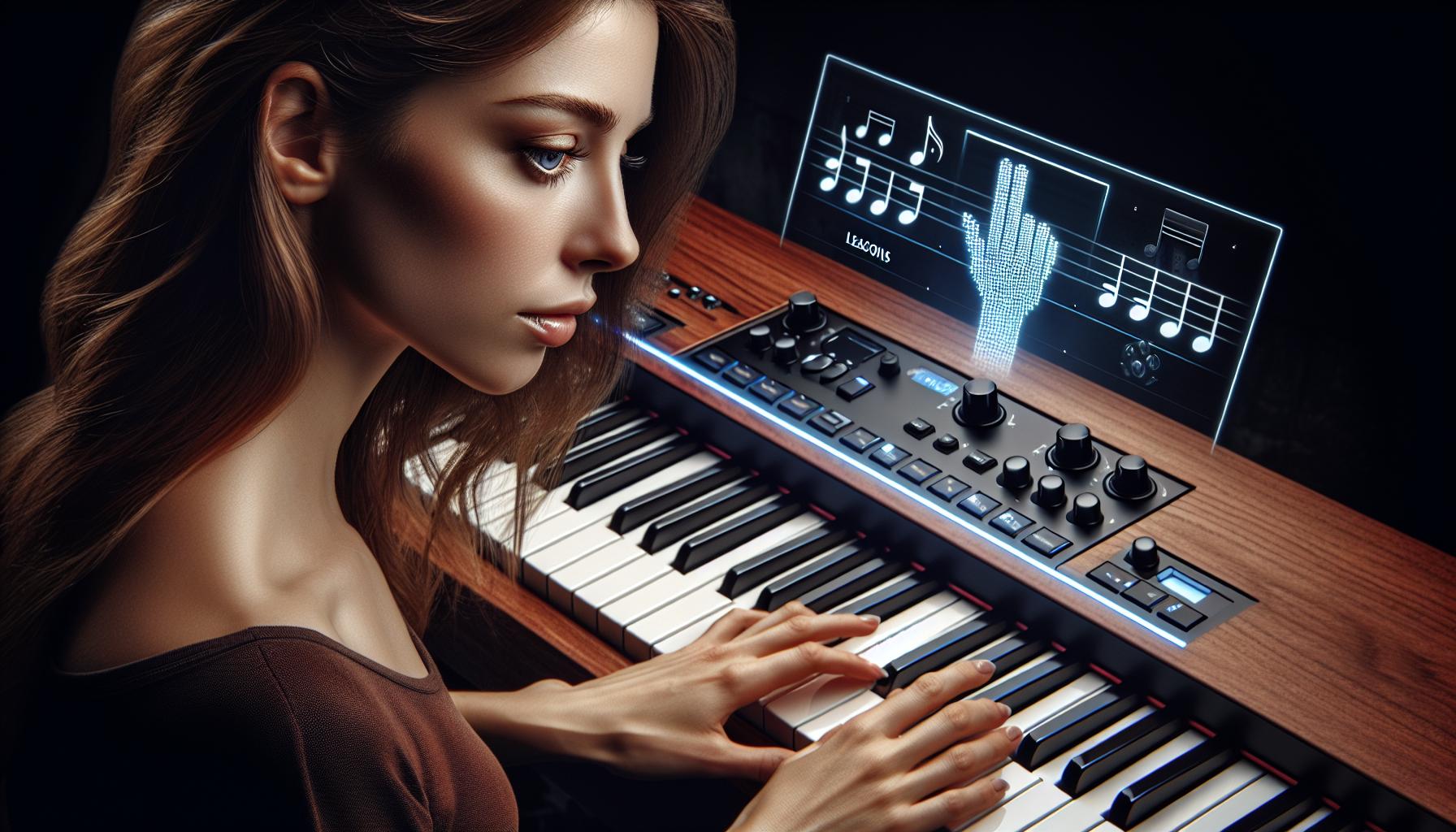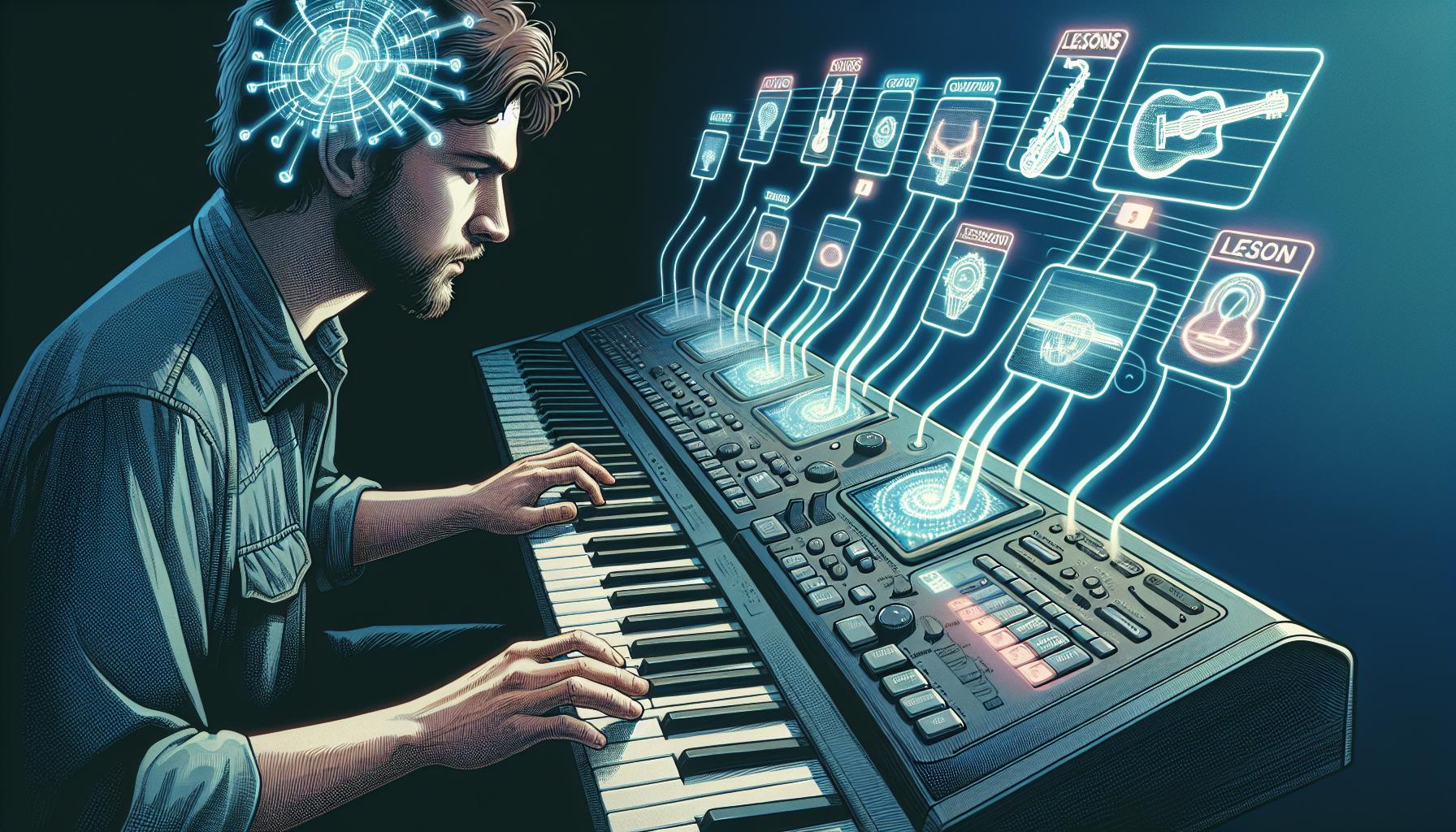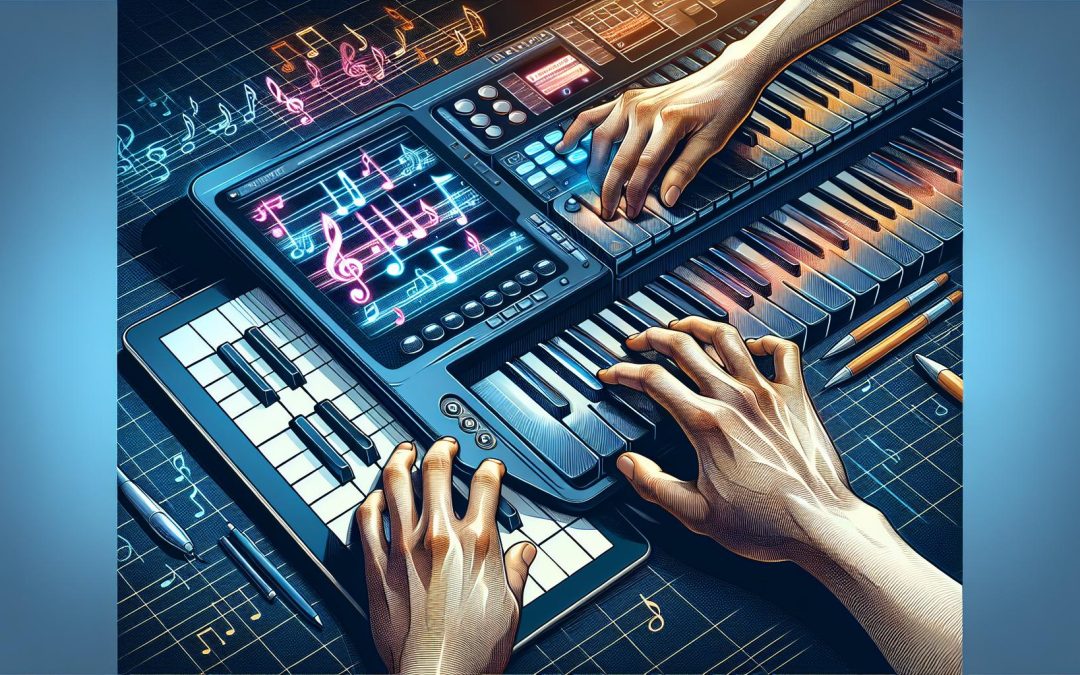Starting your musical journey can be both exciting and a bit daunting. But what if there was a way to make it easier and more fun from the get-go? Enter the world of keyboards, the gateway to unleashing your inner musician without getting bogged down by complexity.
Choosing the right keyboard is key. It's not just about the number of keys or fancy features; it's about finding an instrument that's user-friendly and packed with resources to help beginners learn songs quickly. Whether you're into pop hits, classical tunes, or creating your own compositions, there's a perfect keyboard out there for you.
Features to Look for in a Beginner-Friendly Keyboard
When embarking on a musical journey, it's crucial to find an instrument that not only fits one's budget but also encourages learning and creativity. A beginner-friendly keyboard should serve as a gentle introduction to the world of music, providing features that simplify the learning process. Here are some key features to look for:
Built-In Learning Tools
Many keyboards today come equipped with learning modes and integrated lesson programs. These features offer step-by-step tutorials on playing songs, often with light-up keys to guide finger placement. This interactive approach helps beginners understand timing and melody in an engaging manner.
Wide Range of Voices and Rhythms
Variety is the spice of life, and the same goes for music. Keyboards that offer a broad selection of instrument voices and rhythms enable beginners to experiment with different sounds. This not only makes practice sessions more enjoyable but also broadens one's musical understanding and appreciation.
Touch-Sensitive Keys
Touch sensitivity is a feature that makes the volume and tone of a note change based on how hard the keys are pressed, mimicking the dynamic range of an acoustic piano. For beginners, starting on a keyboard with touch-sensitive keys can be beneficial for developing proper finger technique and dynamics early on.
Recording and Connectivity Options
The ability to record one's playing is invaluable for progress tracking and noticing areas that need improvement. Moreover, connectivity options such as USB or MIDI allow beginners to connect their keyboards to computers or tablets. This opens up a world of digital learning resources, apps, and software, further enriching the learning experience.
| Feature | Benefit |
|---|---|
| Built-In Learning Tools | Simplifies the learning process with interactive tutorials |
| Wide Range of Voices | Encourages musical exploration and creativity |
| Touch-Sensitive Keys | Helps develop proper technique and dynamics |
| Recording and Connectivity | Enables progress tracking and access to digital resources |
Investing in a keyboard with these features not only makes the learning process more manageable but also more fun. With technology at their fingertips, beginners are less likely to get frustrated and more likely to stick with their musical education. The road to becoming proficient at the keyboard is filled with challenges, but the right instrument can make all the difference.
Key Considerations for Learning Songs Easily

When embarking on the journey to master songs on the keyboard, learners ought to focus on several pivotal factors that can significantly ease the process. First off, they should zero in on keyboard action. Keyboards with weighted or semi-weighted keys mimic the feel of an acoustic piano, providing a more realistic playing experience. This feature is crucial for building proper finger strength and technique, essential components for seamlessly learning and performing songs.
Moreover, the size of the keyboard plays a vital role. A full-size keyboard with 88 keys is ideal, as most music pieces are composed with this range in mind. However, beginners might find a 61-key or 76-key keyboard more manageable. It's a trade-off between range and affordability, but starting with fewer keys doesn't hamper the learning of most songs.
Another important consideration is the quality of sound. High-quality sound samples and a good set of built-in speakers make the learning experience more enjoyable and rewarding. They help the learner to discern nuances in music, fostering a deeper understanding and appreciation of the pieces they're learning. Brands often provide detailed information on their sound engines and samples, so potential buyers should pay close attention to this aspect.
Learning tools embedded within the keyboard can greatly accelerate the learning curve. Features like onboard lessons, play-along tracks, and light-up keys guide beginners through songs step by step. Furthermore, connectivity options such as USB and MIDI allow for the integration of external educational resources, expanding the repertoire of songs at the learner's disposal. These tools offer valuable feedback, enabling learners to self-assess and adjust their practice efficiently.
Here are some key features and their importance:
| Feature | Importance |
|---|---|
| Weighted Keys | Builds finger strength and technique |
| Full-Size Keyboard | Offers a complete range of notes |
| High-Quality Sound | Enhances musical ear and appreciation |
| Learning Tools | Simplifies practice and accelerates learning |
Lastly, but equally important, is the selection of songs. Beginners should start with simple melodies that they enjoy and are familiar with. This keeps motivation high and makes practice sessions something to look forward to. As their skills advance, they can gradually take on more complex pieces, expanding their musical capabilities. The right keyboard should inspire and facilitate this progression, equipped with a variety of sounds and rhythms to explore different musical genres.
Top Keyboards Recommended for Beginners

When starting on the journey to learn keyboard, choosing the right instrument can make a world of difference. There are several keyboards on the market tailored specifically for beginners, offering features that enhance learning and make practice sessions more effective and enjoyable.
Yamaha's PSR-EW300 comes highly recommended for its 76 key setup, offering a wide range of musical expressivity while not overwhelming the beginner with the full 88-key range of a traditional piano. It's semi-weighted keys strike a balance between ease of use and an authentic piano feel, aiding in the development of proper finger technique from the outset. Additionally, the PSR-EW300 boasts a comprehensive library of over 500 voices, including pianos, strings, and brass, ensuring students can explore a variety of sounds as their skills grow.
Casio’s CTK-2550 is another stellar option for beginners, highlighting its portability and affordability. It comes equipped with a 61-key layout, which is more than adequate for learning basic songs and chords. What sets the CTK-2550 apart is its Step-Up Learning System, designed to gradually guide users through lessons at their own pace. The system breaks down complex pieces into manageable, bite-sized components, making learning less daunting for novices. Moreover, the keyboard offers connectivity to the Chordana Play app, enabling learners to access tutorials and track progress directly from their smartphones.
For those looking for something that closely mimics the acoustic piano, the Alesis Recital is a fantastic choice. It boasts 88 full-sized semi-weighted keys, adjustable touch response to suit personal preferences, and five realistic voices (acoustic piano, electric piano, organ, synth, and bass) for varied practice sessions. The keyboard also offers an educational mode that divides the keyboard into two zones with the same pitch and voice, perfect for side-by-side lessons with a teacher.
Connectivity is another factor where the Alesis Recital shines. It features USB-MIDI and 1/4” Audio Outputs for easy connection to a computer or external sound system. This makes it a versatile option for those who may want to explore music production or perform live as their skills advance.
Learning Resources and Tools to Aid Song Learning

When embarking on learning songs on a keyboard, having the right resources and tools is just as important as choosing the right instrument. In today’s digital age, learners have an array of options at their disposal to make the journey both enjoyable and effective.
Integrated Learning Systems
Many modern keyboards come equipped with integrated learning systems designed to guide beginners through songs and techniques at their own pace. For instance, the Casio’s Step-Up Learning System breaks down songs into smaller, manageable parts, allowing learners to focus on one section at a time. Similarly, Yamaha's Education Suite offers interactive lessons that rate your play, providing valuable feedback to improve.
Mobile Apps and Online Platforms
The rise of mobile apps and online platforms has revolutionized the way we learn music. Apps like Simply Piano and Yousician offer interactive lessons that listen to you play and give real-time feedback. These platforms cover everything from reading music to mastering full songs, catering to different genres and skill levels.
| Platform | Features |
|---|---|
| Simply Piano | - Interactive lessons - Real-time feedback |
| Yousician | - Extensive song library - Tracks your progress |
Moreover, YouTube has become an invaluable resource with thousands of free tutorials and play-along videos. Channels specializing in keyboard instruction offer step-by-step tutorials on popular songs, technical skills, and more.
Connectivity Options
The ability to connect a keyboard to a computer or tablet opens up a world of learning possibilities. Keyboards with USB MIDI connectivity allow learners to use software like GarageBand, Synthesia, or Musescore for an enhanced learning experience. These programs can display sheet music on the screen, slow down the tempo of songs, and even isolate specific hands in the music piece, making practice sessions much more productive.
Practice Techniques
While having the right tools is crucial, incorporating effective practice techniques into your routine can significantly enhance your learning efficiency. Some proven methods include:
- Slow Practice: Playing a new song slowly to ensure accuracy before increasing the speed.
- Chunking: Breaking songs down into smaller sections and mastering each before moving on.
- Repetitive Practice: Repeating challenging sections until they become comfortable.
Incorporating these strategies with the aforementioned resources can accelerate the learning curve, making the process of learning songs on a keyboard more enjoyable and satisfying.
Conclusion
Choosing the easiest keyboard to learn songs on isn't just about the instrument itself. It's also about leveraging the wealth of resources and tools available. From the integrated learning systems of Casio and Yamaha to the interactive lessons offered by apps and online platforms, there's never been a better time to dive into music. Remember, effective practice techniques can significantly enhance your learning curve. So grab your keyboard, explore these resources, and embark on a musical journey that's both rewarding and fun.
Harlan Kilstein began playing piano during covid with no piano background at all. He taught himself how to play learning what to do and what not to do.
Today he's an advanced intermediate player and can help you grow in your skills because he learned all this on his own.








